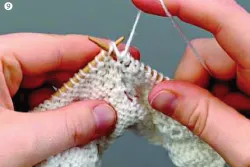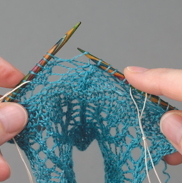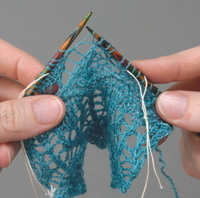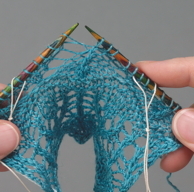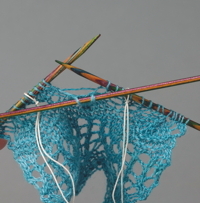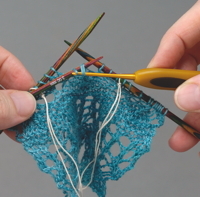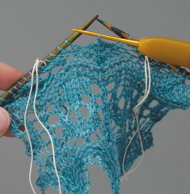Featured image: Amethyst laceweight jumper by Amanda Jones, as featured in The Knitter issue 94
Fixing missed yarn overs
A very common mistake is to forget to work a yarn over. This can throw the whole row out by one stitch from that point so it is fairly easy to spot.
Unpick stitch by stitch to that point.
Insert the LH needle under the yarn lying between the two stitches and there – you have your yarn over. It will be a little tighter than it ought to be, but that can be evened out at the end, when blocking.
Check out the rest of our lace knitting masterclass series!
In the first part of the series by expert knitter Judy Furlong, we talk you through how to avoid making mistakes (and troubleshoot what to do when you make them!)
